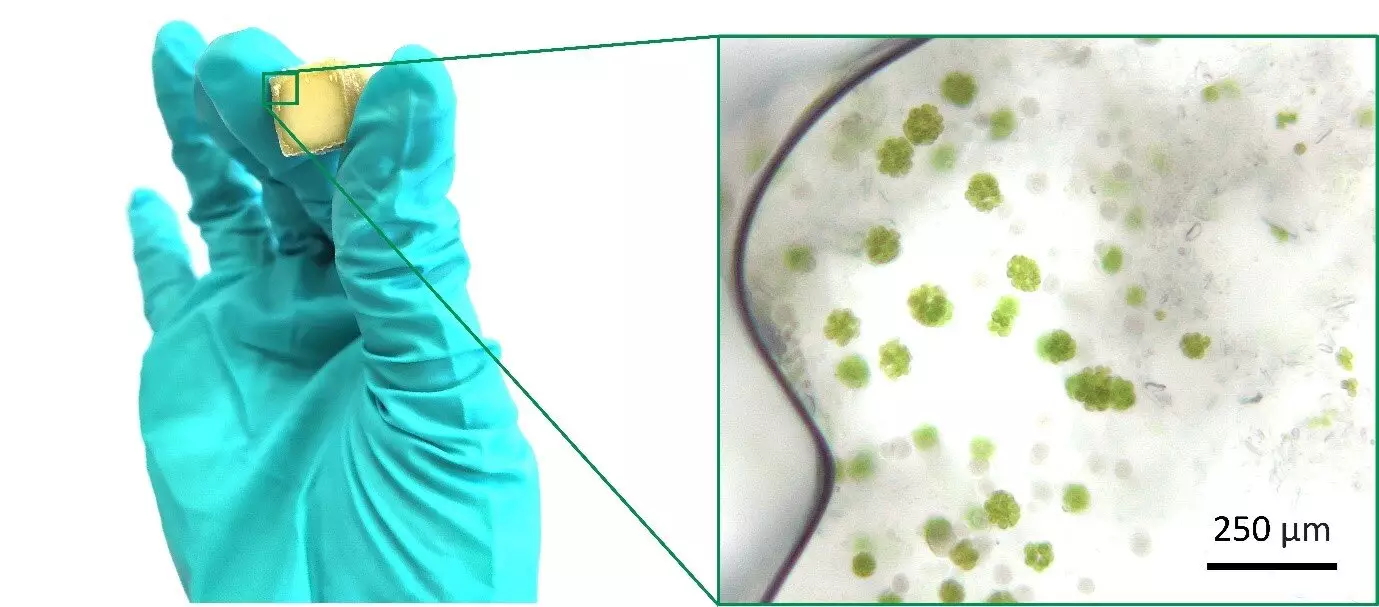Scientists from TU Delft have made groundbreaking discoveries on how to optimize the growth of confined microalgal cells in photosynthetic engineered living materials (ELMs). These materials, which utilize light energy, allow microalgae to convert CO2 from the air into sugars, energy, and oxygen for their survival. The potential applications of such algae-based living materials are immense, ranging from CO2 capture to oxygen sources for biological tissues. The findings of this study, led by Marie-Eve Aubin-Tam and Kunal Masania, have been published in Advanced Materials.
According to Aubin-Tam, biophysicist and co-leader of the research team, “Engineered living materials (ELMs) are an exciting new class of materials that have the potential to revolutionize society.” Photosynthetic living materials, in particular, hold great promise as they allow organisms to actively photosynthesize. In nature, bacteria, algae, and plants perform photosynthesis to produce sugars for their survival. By applying similar principles to engineered living materials, the team aimed to develop materials capable of delivering oxygen to biological or engineered tissues, where oxygen supply often limits growth.
Understanding Cell Growth in ELMs
One of the main challenges in utilizing ELMs on a larger scale is the lack of control over cell growth within these materials. To address this issue, the researchers investigated how the growth of microalgal cells is influenced by several factors, including the shape of the material, light exposure, and access to nutrients and CO2. They made a significant observation that the cells predominantly grew along the edges of the material, where they had better access to air and light. This finding led the team to explore the impact of material structure on cell growth.
The Role of Material Shape and Surface Area
The researchers discovered that a thin structure with a large surface area significantly increased the efficiency of ELMs. In these structures, a significant portion of the cells congregated along the edges, which provided better access to air. Interestingly, this pattern of cell growth closely resembled the structure of plant leaves. Leaves possess a thin structure with a large surface area, allowing a substantial number of cells to be exposed to sunlight for photosynthesis.
Through their research, the team emphasized the importance of accessibility to light and CO2 for optimal cell growth. Introducing a small opening for gas exchange in the material’s structure visibly improved cell growth in the inner layers. However, this came at the cost of accelerated dehydration, which proved detrimental to cell health. The researchers drew parallels to nature, where leaves have stomata, small openings that regulate gas exchange without excessive water loss. Implementing mechanisms that respond to a shortage of CO2, similar to stomata in leaves, would enhance the longevity and efficiency of photosynthetic ELMs.
Investigating Material Composition
To conduct their experiments on cell growth, Aubin-Tam’s team needed to develop a new composition for the ink used in the printing process. Designing a new ink that allowed the printing of larger and more complex objects was crucial to the study. While Aubin-Tam focused on studying cell growth, Masania, a material scientist from the faculty of Aerospace Engineering, collaborated with Elvin Karana from the faculty of Industrial Design Engineering to develop a 3D printable ink suitable for creating living photosynthetic materials for future applications.
Implications of Cell Growth Research
Aubin-Tam concludes that the study of cell growth within ELMs is pivotal in optimizing their functionality and efficient utilization. This research sheds light on the factors that influence cell growth and emphasizes the need for careful consideration of material structure and composition. By understanding how to control the growth of confined microalgal cells, scientists can unlock the potential of photosynthetic ELMs in various fields, including CO2 capture and tissue oxygenation. The newfound knowledge paves the way for the development of innovative materials that can revolutionize industries and benefit society as a whole.
The study conducted by scientists from TU Delft reveals insights into optimizing the growth of confined microalgal cells in photosynthetic engineered living materials. With a focus on factors such as material shape, surface area, and accessibility to light and CO2, the researchers provide valuable information on how to enhance cell growth and maximize the functionality of ELMs. Their findings have the potential to usher in a new era of sustainable materials with diverse applications, ranging from environmental benefits to advancements in tissue engineering.



Leave a Reply